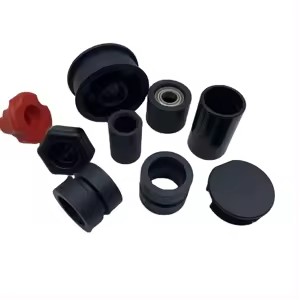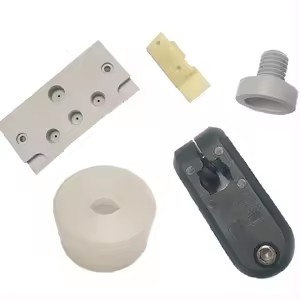- Mar 18, 2024
Plastic injection molding is a versatile manufacturing process that enables the production of a wide range of plastic products with intricate shapes and structures. One of the key factors influencing the success of injection molding is the selection of suitable plastics. Different types of plastics offer unique properties and characteristics, making them suitable for various applications in industries ranging from automotive and aerospace to consumer goods and medical devices. In this article, we'll explore the types of plastics commonly used in injection molding and their respective properties.
Polyethylene (PE): Polyethylene is one of the most widely used plastics in injection molding due to its excellent versatility and cost-effectiveness. It is available in various grades, including low-density polyethylene (LDPE), high-density polyethylene (HDPE), and linear low-density polyethylene (LLDPE). LDPE is known for its flexibility and impact resistance, making it suitable for applications such as packaging films and containers. HDPE offers excellent stiffness and chemical resistance, making it ideal for products like bottles, pipes, and automotive components. LLDPE combines the properties of LDPE and HDPE, making it suitable for applications requiring high strength and flexibility, such as plastic bags and agricultural films.
Polypropylene (PP): Polypropylene is another popular choice for injection molding due to its excellent chemical resistance, high-temperature resistance, and dimensional stability. It is commonly used in a wide range of applications, including packaging, automotive components, household appliances, and medical devices. PP can be easily recycled, making it an environmentally friendly option for injection molding applications. Its versatility, durability, and cost-effectiveness make it a preferred choice for many plastic mold manufacturers and product designers.

Polyvinyl Chloride (PVC): Polyvinyl chloride, or PVC, is a widely used thermoplastic polymer known for its durability, chemical resistance, and flame-retardant properties. It is commonly used in injection molding applications such as pipes, fittings, window profiles, and electrical insulation. PVC is available in rigid and flexible formulations, offering versatility in product design and application. Its ability to withstand harsh environments and extreme temperatures makes it a preferred choice for outdoor and industrial applications.
Polystyrene (PS): Polystyrene is a lightweight and rigid thermoplastic polymer commonly used in injection molding applications requiring clarity, impact resistance, and dimensional stability. It is available in two main forms: general-purpose polystyrene (GPPS) and high-impact polystyrene (HIPS). GPPS is transparent and brittle, making it suitable for applications such as packaging, disposable cups, and cosmetic containers. HIPS is a modified form of polystyrene that offers improved impact resistance, making it suitable for applications such as appliance housings, toys, and electronic enclosures.
Acrylonitrile Butadiene Styrene (ABS): ABS is a versatile thermoplastic polymer known for its excellent impact resistance, dimensional stability, and aesthetic appeal. It is commonly used in injection molding applications requiring high strength, toughness, and surface finish, such as automotive parts, consumer electronics, and household appliances. ABS can be easily modified to achieve specific properties, such as increased heat resistance or improved flowability, making it a preferred choice for a wide range of products.
Polyethylene Terephthalate (PET): Polyethylene terephthalate, or PET, is a versatile thermoplastic polymer known for its excellent clarity, toughness, and barrier properties. It is commonly used in injection molding applications such as beverage bottles, food containers, and medical packaging. PET can be easily recycled, making it an environmentally friendly option for single-use and disposable products. Its ability to withstand high temperatures and resist chemical degradation makes it suitable for a wide range of packaging and industrial applications.
These are just a few examples of the types of plastics commonly used in injection molding. Each type of plastic offers unique properties and characteristics that make it suitable for specific applications. When selecting plastics for injection molding, it is essential to consider factors such as mechanical properties, chemical resistance, environmental factors, and cost-effectiveness. By choosing the right type of plastic for your injection molding project, you can ensure the production of high-quality, durable, and cost-effective plastic products.


